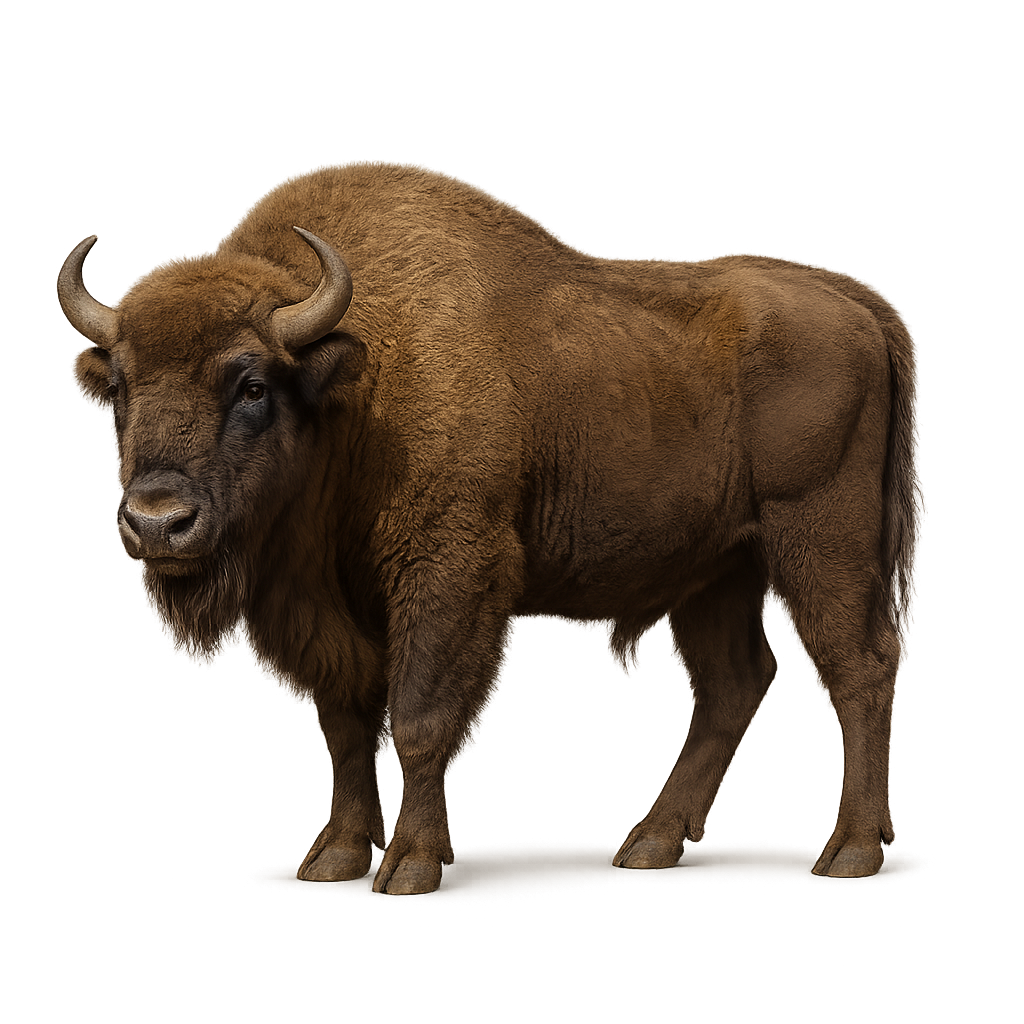Observe and photograph a species in its natural habitat
Learn where and when to observe a species in the wild, how to recognize it in the field, and what habitats it lives in. Get photography tips adapted to its behavior and capture stunning images without disturbing the animal. For full details, open the complete profile in the WildlifePhotographer app.
European bison
Scientific name: Bos bonasus

IUCN Status: Near Threatened
Family: BOVIDAE
Group: Mammals
Shyness: Suspicious
Safe distance: 60 m
Breeding season / Courtship: 15.07-15.09
Gestation: 9 mois
Births: 15.04-15.06
Habitat:
Forests and meadows
Description:
The European Bison is the largest land mammal in Europe, characterized by its imposing size, thick fur, and arched back. Once widespread across the forests of Europe, it nearly went extinct in the early 20th century, but thanks to conservation programs, wild populations have been reintroduced in several European regions. The European Bison primarily inhabits forests and wooded meadows, where it feeds on grasses, leaves, twigs, and young tree shoots.
This bison is a social animal, living in small groups or large herds, with males fighting for dominance. While its population is growing, the European Bison remains a vulnerable species due to habitat loss and fragmentation of its territory. The protection and management of its habitats remain essential for its survival.
Recommended lens:
>=300 mm
Photography tips:
Approach slowly and discreetly, using a telephoto lens to capture images at a distance, as the European Bison is a massive animal and may become defensive if it feels threatened.
Photograph early in the morning or late in the afternoon, when the light is soft and the European Bison is more active, often moving or feeding in forests or meadows.
Capture moments of natural behavior: The European Bison lives in herds, which creates beautiful opportunities to capture group dynamics or impressive portraits of this majestic animal.
Be patient and respectful: The European Bison can be quite secretive, especially when it hides in forests. Wait for moments when it is more visible without disturbing its natural activities.
The European Bison is a vulnerable species, but it has made a remarkable comeback thanks to conservation efforts. It is essential to respect its natural environment and not disturb its feeding or social behavior. Follow local conservation guidelines to preserve this species and its natural habitat.
Ready to take action?
Choose your platform and start your free trial today



